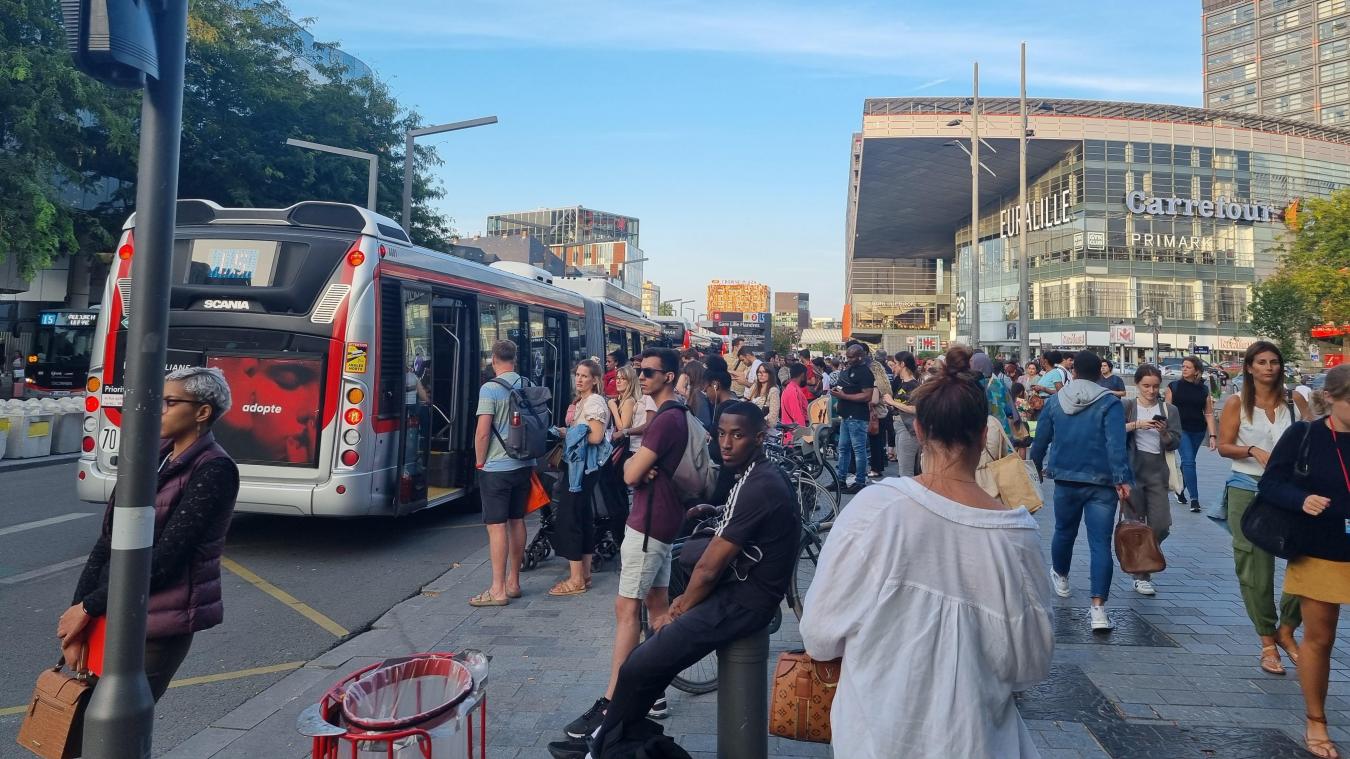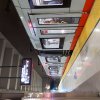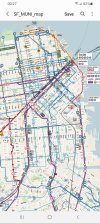Far from the only example. While well meaning, turning old railway into cycle paths is a death sentence for reuse as light rail. The cycle lobby is far more influential. And yet local authorities continue to do it, while claiming they'll look at light rail use in the future.
-
Our booking engine at tickets.railforums.co.uk (powered by TrainSplit) helps support the running of the forum with every ticket purchase! Find out more and ask any questions/give us feedback in this thread!
You are using an out of date browser. It may not display this or other websites correctly.
You should upgrade or use an alternative browser.
You should upgrade or use an alternative browser.
What hope for light rail expansion in the UK?
- Thread starter geoffk
- Start date
- Status
- Not open for further replies.
Sponsor Post - registered members do not see these adverts; click here to register, or click here to log in
R
RailUK Forums
HSTEd
Veteran Member
- Joined
- 14 Jul 2011
- Messages
- 16,739
The economics of level crossing removal change dramatically when it's the enabler for massive reductions in staff numbers.Generally speaking, i don't think most of the former rail lines that are now light rail - or are proposed to be - would be suitable for such low-level automated systems without significant infrastructure investment.
For example some have things like level crossings that wouldn't be cheap to remove. These lines are light rail precisely because the government doesn't want to spend the money to provide segregated infrastructure, outside the big smoke that is.
The economics of level crossing removal change dramatically when it's the enabler for massive reductions in staff numbers.
Capital funding is primarily from central government, staff wages are paid for from the local government-owned farebox. Wages aren't central government's problem, so no incentive to invest.
Far from the only example. While well meaning, turning old railway into cycle paths is a death sentence for reuse as light rail. The cycle lobby is far more influential. And yet local authorities continue to do it, while claiming they'll look at light rail use in the future.
but surely that’s a good thing if, like in Bristol, it’s is very well used?
but surely that’s a good thing if, like in Bristol, it’s is very well used?
No as there are far fewer viable rail corridors than there are viable cycle routes, and a rail corridor will serve far more people.
JohnRegular
Member
- Joined
- 12 Dec 2016
- Messages
- 253
Your first point is true, although I don't think it follows that any given route should be built as light rail. Rail is perhaps 'unlucky' that disused railways just so happen to be perfect as cycling routes- minimal gradients, no sharp curves, few points of interaction with motor vehicle traffic, and often heading into urban centres.No as there are far fewer viable rail corridors than there are viable cycle routes, and a rail corridor will serve far more people.
Will a rail corridor serve far more people? I honestly don't know, but I don't think that's a given, would you care to elaborate?
The Bristol and Bath Railway Path moves a lot of people, and I can only guess that the cost of its construction and maintenance is orders of magnitude lower than a light rail route. It also comes with less tangible benefits, such as its function as a leisure space (effectively a linear park in parts). Maybe light rail is 'better', perhaps it would move more people, but is it worth the massive expenditure and controversy to replace an excellent, well used and well liked asset?
(I apologise if this is drifting too far off topic, perhaps worth a new thread if one hasn't been created before; I know similar discussions have been had before on other threads.)
Although airports usually have plenty of other staff nearby including security to deal with any problems and alarms.I was thinking more like the UTO systems you see at airports
Yes, that was rather spooky when I first rode the Lille Metro as a teenager in the 1980s. I expect it was very well covered by CCTV with copious alarm circuits to central control. No doubt fairly maintenance intensive and expensive back then.or the VAL, which have literally no one around.
Yes, that was rather spooky when I first rode the Lille Metro as a teenager in the 1980s. I expect it was very well covered by CCTV with copious alarm circuits to central control. No doubt fairly maintenance intensive and expensive back then.
The Lille Metro will be 40 years old next year, and is starting to show its age.
Here is a report of a breakdown yesterday.

Panne du métro à Lille : la ligne 1 très impactée jusqu’à la fin du service
Les deux lignes du métro lillois ont été touchées par des pannes ce lundi. La lig...
 www.lavoixdunord.fr
www.lavoixdunord.fr
Panne du métro à Lille : la ligne 1 très impactée jusqu’à la fin du service
Les deux lignes du métro lillois ont été touchées par des pannes ce lundi. La ligne 1 restera en grande partie à l’arrêt jusqu’à la fin du service.
Grosse galère ce lundi en fin de journée pour les usagers du métro. Les deux lignes ont été touchées par deux pannes séparées. La ligne 2 a été victime « d’une erreur d’aiguillage » vers 18h15 et a repris une demi-heure plus tard.
Sur la ligne 1, c’est « un défaut de pneumatique » sur une rame qui bloque le trafic entre CHU-Eurasanté et Villeneuve-d’Ascq-Hôtel-de-Ville. La circulation, qui devait reprendre vers 21 heures, sera finalement interrompue jusqu’à la fin du service. « Des bus relais sont en place », précise Ilévia.
Grosse galère ce lundi en fin de journée pour les usagers du métro. Les deux lignes ont été touchées par deux pannes séparées. La ligne 2 a été victime « d’une erreur d’aiguillage » vers 18h15 et a repris une demi-heure plus tard.
Sur la ligne 1, c’est « un défaut de pneumatique » sur une rame qui bloque le trafic entre CHU-Eurasanté et Villeneuve-d’Ascq-Hôtel-de-Ville. La circulation, qui devait reprendre vers 21 heures, sera finalement interrompue jusqu’à la fin du service. « Des bus relais sont en place », précise Ilévia.
Des bus pleins à craquer
Mais aux abords de la gare Lille-Flandres, les esprits s’échauffent. Difficile en effet d’emprunter un de ces bus, tous pleins à craquer, et certains voyageurs jouent des coudes. « Ça fait plus d’une heure que j’attends, peste Laurine. On n’arrive pas à monter, il y a beaucoup trop de monde. » « C’est le quatrième qui me passe sous le nez, je n’en peux plus », ajoute ce jeune homme, grosse valise à la main. « Il faut être patient, glisse une médiatrice Ilévia. Ils passent toutes les 8 à 10 minutes. »
Nombreux sont également ceux qui ont voulu se rendre à la course cycliste du Guidon d’or à Hellemmes et ont dû se résoudre à y aller à pied... Les bus relais ne desservant pas les stations Marbrerie, Mairie-d’Hellemmes et Square-Flandres jusqu’à 22 heures. « Moi je rentrerai bien à vélo, mais il n’y a plus un V’Lille de libre », lance un étudiant à ses amis. Une dame ironise au téléphone : « Super rentrée ! Ça promet ! »
The Lille metro also has capacity issues at peak times and there is a programme of expansion on line 1, but this has been delayed.
All stations and trains are covered by CCTV, and there is a roving team of "Agents De Prevention" who travel the system providing security and can be sent to trouble spots if required.
A system like Lille would be hopelessly inadequate in most UK cities, unless you provided 4 or 6 car trains from the start.
Look at what has happened with the DLR over the years. If you compare the system today with when it opened in 1987, it is unrecognisable.
The two car trains accommodate about 200 people, and can run up to every minute. How many corridors in the UK outside London move 10000 people per hour?A system like Lille would be hopelessly inadequate in most UK cities, unless you provided 4 or 6 car trains from the start.
HSTEd
Veteran Member
- Joined
- 14 Jul 2011
- Messages
- 16,739
Yes, that was rather spooky when I first rode the Lille Metro as a teenager in the 1980s. I expect it was very well covered by CCTV with copious alarm circuits to central control. No doubt fairly maintenance intensive and expensive back then.
Actually Lille Metro was a posterchild of low maintenance and small staffs at the time.
Despite the small size of the system, which normally has all sorts of maintenance and staffing disbenefits, it achieved much lower maintenance requirements than similar "conventional" systems. See this paper
Fair enough. I'm not disagreeing with the principle, but that level of automation and monitoring was groundbreaking at the time and must have been more difficult and expensive when it was designed 40 years ago than it would be today!Actually Lille Metro was a posterchild of low maintenance and small staffs at the time.
Despite the small size of the system, which normally has all sorts of maintenance and staffing disbenefits, it achieved much lower maintenance requirements than similar "conventional" systems. See this paper
Busaholic
Veteran Member
- Joined
- 7 Jun 2014
- Messages
- 14,091
Unrecognisable except in the size of the trains! Granted, they now have three carriages, but....!The Lille Metro will be 40 years old next year, and is starting to show its age.
Here is a report of a breakdown yesterday.

Panne du métro à Lille : la ligne 1 très impactée jusqu’à la fin du service
Les deux lignes du métro lillois ont été touchées par des pannes ce lundi. La lig...www.lavoixdunord.fr
A system like Lille would be hopelessly inadequate in most UK cities, unless you provided 4 or 6 car trains from the start.
Look at what has happened with the DLR over the years. If you compare the system today with when it opened in 1987, it is unrecognisable.
Even on opening day the DLR was already being dismantled for expansion. Canary Wharf station never opened in its original wayside halt form.Look at what has happened with the DLR over the years. If you compare the system today with when it opened in 1987, it is unrecognisable.
The DLRs fortune was that, unlike other UK light rail systems of the modern era, it had no street running at all. It was a close thing, because one of the options for what became the Stratford branch was to turn west at Bow Church along the A12 to Mile End Underground station, which would have prevented fully automatic operation, which brought a fully closed system and thus facilitated all the expansion into what in reality is now a mainstream TfL Underground line, although still with many of its initial upsides like unstaffed stations.
Unrecognisable except in the size of the trains! Granted, they now have three carriages, but....!
This is why I said that a metro like Lille would not be adequate for many British cities.
I couldn't imagine having a VAL system like Lille instead of the Tyne & Wear metro or the Merseyrail system, for example.
Possibly the Glasgow subway could have worked as a VAL system, and a VAL system might work in some cities if it was in addition to, rather than instead of, existing tram and rail networks.
I shall report on my experiences of the Lille metro when I return from holiday there in two weeks time.
Only if you completely ignore frequency, as I said in my previous reply to your statement. The Lille Metro has a far higher capacity than many heavy rail lines because it can run at such high frequencies. 200 people 60 times an hour is many more than 600 people 12 times an hour, which is what Merseyrail and the T&W Metro run atThis is why I said that a metro like Lille would not be adequate for many British cities.
I couldn't imagine having a VAL system like Lille instead of the Tyne & Wear metro or the Merseyrail system, for example.
Possibly the Glasgow subway could have worked as a VAL system, and a VAL system might work in some cities if it was in addition to, rather than instead of, existing tram and rail networks.
I shall report on my experiences of the Lille metro when I return from holiday there in two weeks time.
The Monsal Trail, Camel Trail (Wenford Bridge to Padstow) and Stratford-on-Avon - Long Marston are other examples, no doubt discussed on this forum. But these would be candidates for heavy/heritage rail. I had dealings with Sustrans in a previous job and these were not entirely positive.Far from the only example. While well meaning, turning old railway into cycle paths is a death sentence for reuse as light rail. The cycle lobby is far more influential. And yet local authorities continue to do it, while claiming they'll look at light rail use in the future.
Only if you completely ignore frequency, as I said in my previous reply to your statement. The Lille Metro has a far higher capacity than many heavy rail lines because it can run at such high frequencies. 200 people 60 times an hour is many more than 600 people 12 times an hour, which is what Merseyrail and the T&W Metro run at
A system like the Lille Metro could work in some UK cities if demand could match capacity, leaving some room for expansion.
The Lille Metro does not run at maximum capacity in normal circumstances, which leaves the possibility of running extra trains when there is football at the Stade Pierre Mauroy, and especially at the Braderie this coming weekend.
When you refer to the Lille Metro I assume you mean the VAL system, but there's also the tramway, Le Mongy. It's a few years since I was there and I've forgotten whether one ticketing system covers both.A system like the Lille Metro could work in some UK cities if demand could match capacity, leaving some room for expansion.
The Lille Metro does not run at maximum capacity in normal circumstances, which leaves the possibility of running extra trains when there is football at the Stade Pierre Mauroy, and especially at the Braderie this coming weekend.
When you refer to the Lille Metro I assume you mean the VAL system, but there's also the tramway, Le Mongy. It's a few years since I was there and I've forgotten whether one ticketing system covers both.
Yes, I do mean the VAL system when I refer to the Lille Metro.
One ticketing system does cover the metro, the tram and the buses. It uses the Carte Pass Pass which is very similar to the Oyster Card in London, being a smartcard onto which various tickets can be loaded.
I can't see anything yet about using a contactless bank card on the system.
Do we think the West London tram could be re-visited?
The Uxbridge Road is getting increasingly busy with traffic, buses are always getting delayed and there is a lot of regeneration/development along the route.
Perhaps the tram would ease congestion and encourage others to leave their cars behind?
The Uxbridge Road is getting increasingly busy with traffic, buses are always getting delayed and there is a lot of regeneration/development along the route.
Perhaps the tram would ease congestion and encourage others to leave their cars behind?
The Liz running through Paddington should take care of some of that.Do we think the West London tram could be re-visited?
The Uxbridge Road is getting increasingly busy with traffic, buses are always getting delayed and there is a lot of regeneration/development along the route.
Perhaps the tram would ease congestion and encourage others to leave their cars behind?
MisterSheeps
Member
I'm in San Francisco right now, ride around a lot on the 'muni', a catch all term for the city & suburbs diesel, hybrid & battery buses (inc bendy buses), battery backup trolley buses, heritage surface trams, and a tram system that goes underground through the centre with street running elsewhere, has a mix of street level & raised platform stops. One ticket gets you about 1h 45 of seamless mixed mode travel. An RFID (contactless) card (or phone app) ('Clipper') gives a 1/6th discount, is valid on out of city buses, heavy rail (Caltrain), light rail, & ferries throughout the 'bay area'. There are numerous features of this which could apply to Britain (e.g. EW & NS tunnels under Manchester), and the ticketing. Switzerland is similar for mixed mode travel. Before the UK does any extending, it should sort out genuine mixed mode ticketing. But SF isn't all good news, the cable trams are excluded, and the month pass is only valid from the 15th of the month to the next 14th 
Attachments
daodao
Established Member
While in theory that might be true, and there are some obvious routes where demand might theoretically be high, linking the 6 towns with one another and with Newcastle/Keele and with Kidsgrove, there are a number of other factors to consider:Always thought the Potteries could benefit from a light rail/tramway system. It could be done, after all Sheffield has its Supertram and shares a similar hilly geography.
- there is no "folk" memory of trams in the Potteries (unlike Sheffield) as the first generation privately run Potteries Electric Traction (PET) system closed in 1928
- there are a significant number of low bridges on key routes, which restricted the original system to single deck cars, and under which it may be difficult to fit modern single deck cars with pantographs
- the current bus network is fairly slim and poorly used, so demand may be limited
- the area is economically run down and impoverished. so usage may not be high - it is no longer a major economic hub
- there are greater more deserving needs in the area on which the vast sum required to build a modern tram system could be spent
- there is no single "centre" to/from which it is critical to reduce private motor car use

Last edited:
Jozhua
Established Member
- Joined
- 6 Jan 2019
- Messages
- 1,857
Having lived in a couple of light rail served cities (Manchester, Nottingham), as well as regularly visiting others (Sheffield, Newcastle), I've definitely got a fairly good taste for light rail in the UK!
In terms of Nottingham Express Transit, I have to say that while the infrastructure/rolling stock is pretty standard, where it excels is service. Frequency is great, ticketing is straightforward and things like wayfinding, branding and design are modern and simple.
Systems such as the Supertram and Tyne and Wear Metro feel rather outdated in comparison. Metro doesn't exactly run a turn up and go service, while the Supertram has the odd onboard payment and paper tickets.
Metrolink is odd, but honestly feels pretty modern and easy to navigate. The main issue is the interlining to the extreme between Cornbrook and St Peter's Square. I'd say the biggest issue is the system is a little confused - in many ways it is close to being a metro with pretty long, high floor trains. However, it just happens to run on the street through the city centre, with some pretty questionably safe infrastructure around Piccadilly Gardens...
Growth has been a bit slow for many of these systems, however Metro seems to slowly be marching towards modernisation - the new fleet coming this year should help, along with the start of work to renew track, power systems and signalling, which should hopefully mean more frequent service!
Supertram obviously has the tram train project, but I really think they need to make a better effort to modernise the system and run more frequent service on some routes!
Nottingham Express Transit needs to seriously work on getting trams better segregated from traffic through Hyson Green! There are also a number of areas that remain unserved and some missed opportunities for connections. Personally, I would like to see an extension of the Phoenix Park branch out to Langley Mill (to connect with heavy rail) although even Giltbrook would be a good start! Extending Toton Lane branch to Toton Sidings is an obvious move too, HS2 or not!
I just think people should be prescient of the limitations of light rail technology and should evaluate each project on it's merits. For example in the states, there is definitely an issue with running trams to far flung low density suburbs, with pretty pitiful average speeds. (This is where metro/regional rail would arguably provide a better alternative.)
Countries like Germany I think offer a good vision of this balance, with smaller cities running tram trains in the place of a heavier metro system, with bigger cities having S-Bahn/U-bahn systems. It is also very dependent on geography, layout and demographics.
In terms of Nottingham Express Transit, I have to say that while the infrastructure/rolling stock is pretty standard, where it excels is service. Frequency is great, ticketing is straightforward and things like wayfinding, branding and design are modern and simple.
Systems such as the Supertram and Tyne and Wear Metro feel rather outdated in comparison. Metro doesn't exactly run a turn up and go service, while the Supertram has the odd onboard payment and paper tickets.
Metrolink is odd, but honestly feels pretty modern and easy to navigate. The main issue is the interlining to the extreme between Cornbrook and St Peter's Square. I'd say the biggest issue is the system is a little confused - in many ways it is close to being a metro with pretty long, high floor trains. However, it just happens to run on the street through the city centre, with some pretty questionably safe infrastructure around Piccadilly Gardens...
Growth has been a bit slow for many of these systems, however Metro seems to slowly be marching towards modernisation - the new fleet coming this year should help, along with the start of work to renew track, power systems and signalling, which should hopefully mean more frequent service!
Supertram obviously has the tram train project, but I really think they need to make a better effort to modernise the system and run more frequent service on some routes!
Nottingham Express Transit needs to seriously work on getting trams better segregated from traffic through Hyson Green! There are also a number of areas that remain unserved and some missed opportunities for connections. Personally, I would like to see an extension of the Phoenix Park branch out to Langley Mill (to connect with heavy rail) although even Giltbrook would be a good start! Extending Toton Lane branch to Toton Sidings is an obvious move too, HS2 or not!
There is a definite issue with the over-use of light rail in many circumstances it isn't designed for. However, I don't think trams should be resigned to on street running through city centres/dense neighborhoods.One of the key differences between much of continental Europe and UK/Ireland is the distribution of population. Mass transit systems ie trams/light rail are most cost effective (ie operate with less subsidy) transporting people around higher density conurbations where families typically live in apartments, rather than sprawling estates of two-storey houses with small gardens. It isn't completely black and white, but if we want more continental-style light rail we may need we adopt more continental-style approaches to how and where we live.
I just think people should be prescient of the limitations of light rail technology and should evaluate each project on it's merits. For example in the states, there is definitely an issue with running trams to far flung low density suburbs, with pretty pitiful average speeds. (This is where metro/regional rail would arguably provide a better alternative.)
Countries like Germany I think offer a good vision of this balance, with smaller cities running tram trains in the place of a heavier metro system, with bigger cities having S-Bahn/U-bahn systems. It is also very dependent on geography, layout and demographics.
Totally agree, following on from above, plans for new transport should come hand in hand with plans for redevelopment and creation of new neighbourhoods, for example on former industrial land. Developing transit-first neighborhoods helps to reduce concerns about increased traffic, as well as reducing the amount of parking developers need to provide new residents (saving money/space).Yes housing density is certainly a factor, and no doubt bus deregulation has been another. On the continent buses act as feeders to tramways, with integrated ticketing, rather than trying to compete. No doubt bus companies have been whispering in the ear of the Treasury, saying how they can achieve the same result as light rail much more cheaply, even though achieving modal shift with buses is much more difficult.
Totally agree, following on from above, plans for new transport should come hand in hand with plans for redevelopment and creation of new neighbourhoods, for example on former industrial land. Developing transit-first neighborhoods helps to reduce concerns about increased traffic, as well as reducing the amount of parking developers need to provide new residents (saving money/space).
This has been done to some extent in Manchester. There has been development along tram routes, there is a tram stop earmarked for the new neighbourhood being built north east of Victoria and the route of the Trafford Park Line extension would go past the land reserved for "Trafford Waters."
There aren’t a lot of British cities with the required housing and office density to make trams economically viable. Metrolink's "Big Bang" expansion between 2009 and 2020 has done all the low hanging fruit. None of the remaining proposals have a great business case. The best business case is for Tram Train conversions of heavy rail (Marple Rose Hill being the front runner).
Scottish cities generally have a higher population density than those in England but so far they only have the one light rail line in Edinburgh. Not sure what current plans are for Glasgow.There aren’t a lot of British cities with the required housing and office density to make trams economically viable. Metrolink's "Big Bang" expansion between 2009 and 2020 has done all the low hanging fruit. None of the remaining proposals have a great business case. The best business case is for Tram Train conversions of heavy rail (Marple Rose Hill being the front runner).
Rose Hill via Bredbury seems the best option for tram-train in Greater Manchester, with heavy rail services rerouted via Guide Bridge. Of course this would mean a small separate fleet, as Sheffield already has. So far only Nottingham has made use of powers to introduce a workplace parking levy, which appears to have been successful but no doubt politicians elsewhere fight shy of it!
Vespa
Established Member
If the new tramway can connect with the subway north and south of the circle, it would breathe new life into it, at tge moment it's struggling to be relevant as the neighbourhood above ground have changed character and others moved on, some of the subway stations seem to be in the middle of nowhere.Not sure what current plans are for Glasgow.
I think the DLR expansion to Thamesmead will happen by the end of the decade
No chance!
- Status
- Not open for further replies.



